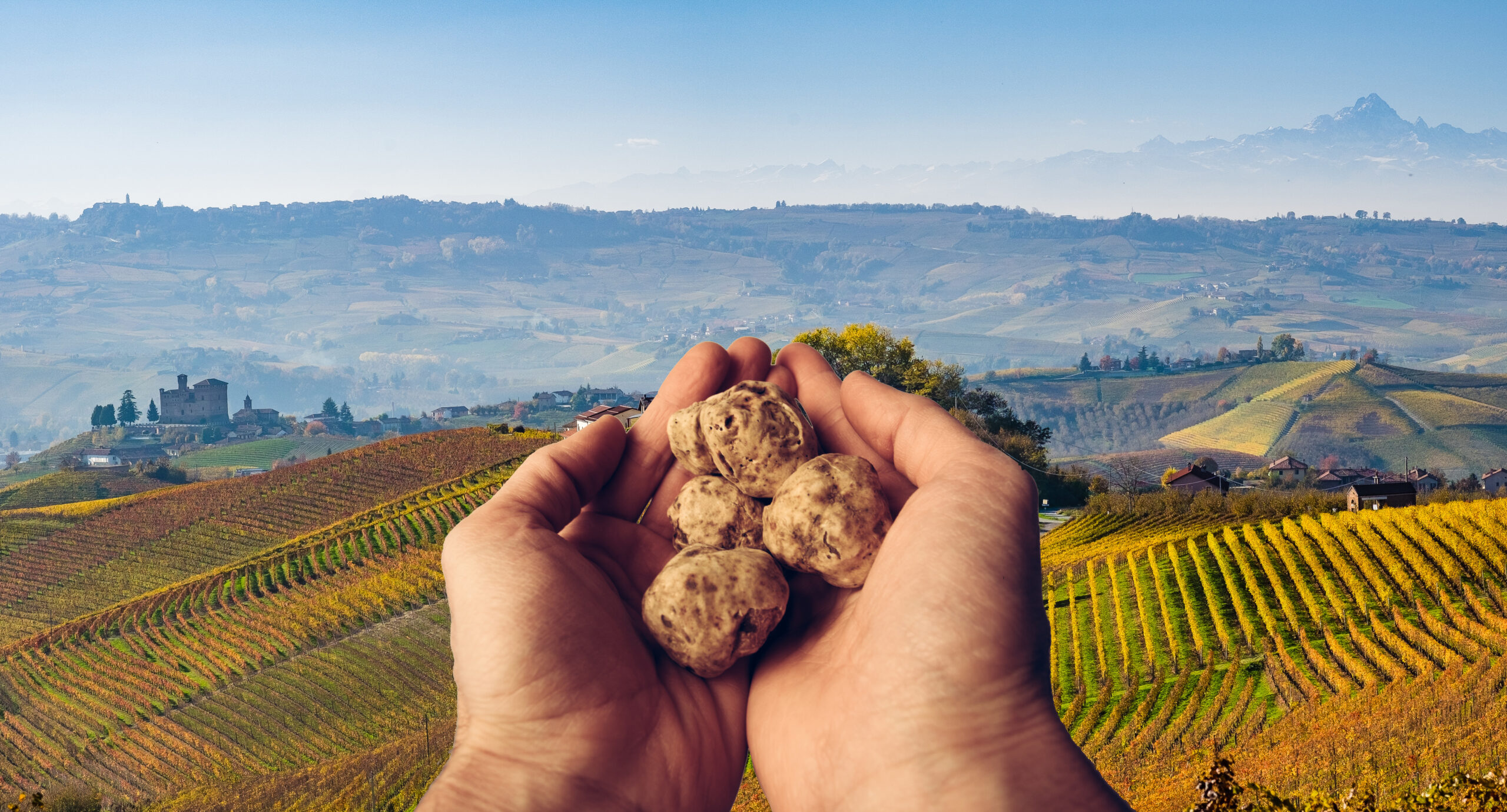Truffle and gastronomy, an ideal pairing. The diversity of Italian landscapes offers many gastronomic products that are unique in the world for their quality. The truffle, also available between May and August in the Estiva and Scorzone varieties, is the perfect example.
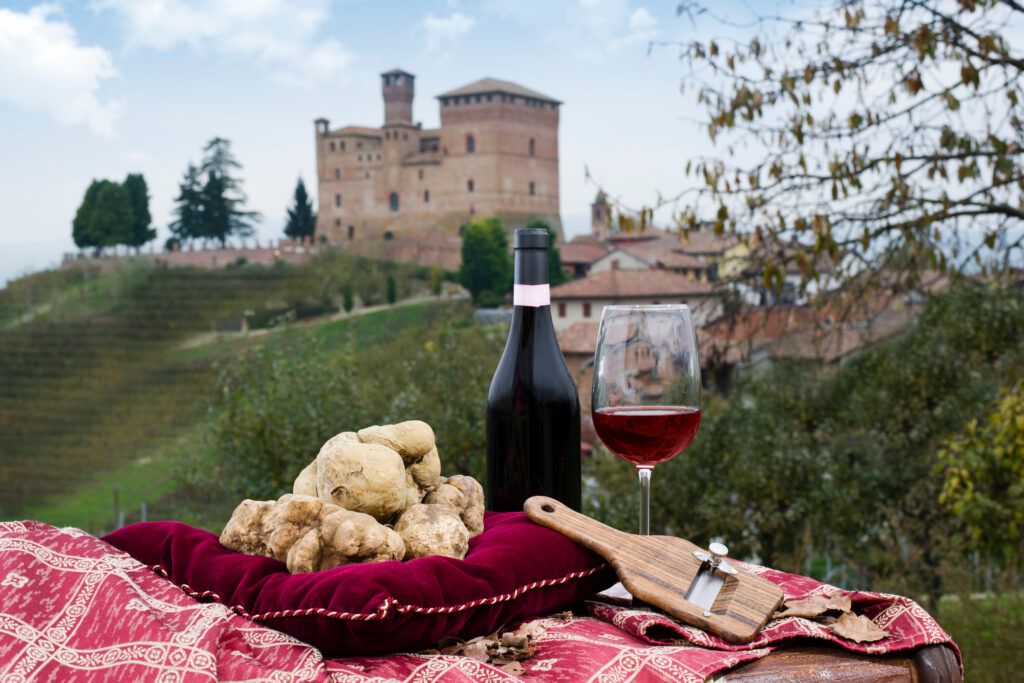
A true delicacy for lovers of good food, it allows you to immerse yourself in the culture and tradition of historic villages surrounded by nature, far from the chaos of big cities.
But what lies behind the rarity of this Italian excellence and, above all, which are the territories where it can be found? Let’s discover “the gold of gastronomy” together by traveling across the country through its most significant places.
The truffle, a jewel of Italian gastronomy, represents a culinary excellence appreciated throughout the world. Classified as an underground mushroom, it grows in specific areas characterized by calcareous soils and the presence of trees such as oaks and holm oaks, from which it draws nutrients. Its collection is an art performed with skill by trained dogs, whose extraordinary olfactory sensitivity allows you to identify truffles by digging underground.

Truffle, UNESCO heritage
In 2021, the thousand-year-old tradition of searching for and extracting truffles in Italy was even recognized and included in the UNESCO list of the Intangible Cultural Heritage of Humanity.
Italy boasts nine varieties of this delicious mushroom, distributed in different areas, from the woods of the Trentino valleys to the Sicilian mountain areas of the Ibei Mountains. Its presence in Italian gastronomy has its roots in antiquity: Roman authors testify it already in imperial banquets, where it was exalted for its rarity and particular growth.
In the nineteenth century, Piedmontese truffles conquered the European courts, so much so that the Savoys used them as gifts for nobles from other states. Today, the most prized and requested variety in the world is found precisely in Piedmont, we are talking about the “tuber magnatum pico”, known as the white truffle of Alba, which grows in the woods of the Langhe, Roero and Monferrato. The harvesting season runs from the end of September to the last days of January.
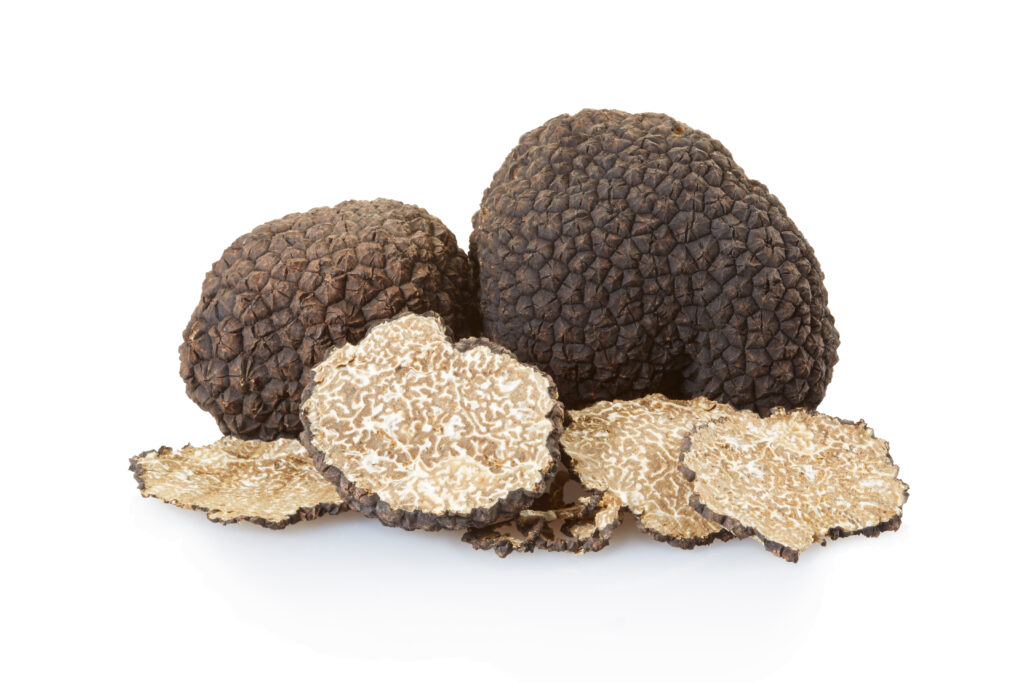
In this area the breathtaking hilly landscapes mix with the renowned winemaking tradition, with wines such as Barbaresco and Barolo, which represent one of the most important Italian gastronomic cultures.
The white truffle of Alba, king of Piedmontese gastronomy
The white truffle, with its delicate and deep flavour, is clearly distinguished from the black truffle due to its less marked intensity, therefore it is rigorously combined with more delicate ingredients, such as utter, eggs and fresh pasta, allowing its flavor to be enhanced without overpowering it . It can also be paired with delicate meat dishes and risottos creamed with fresh cheeses with a lighter flavour.
In the local culinary tradition, the white Alba truffle finds its maximum expression alongside tajarin with butter, a very thin fresh pasta typical of the Langhe, fully enhancing its organoleptic characteristics. All always accompanied by local wines such as Dolcetto and Barbera, whites such as Arneis and even some varieties of Champagne.
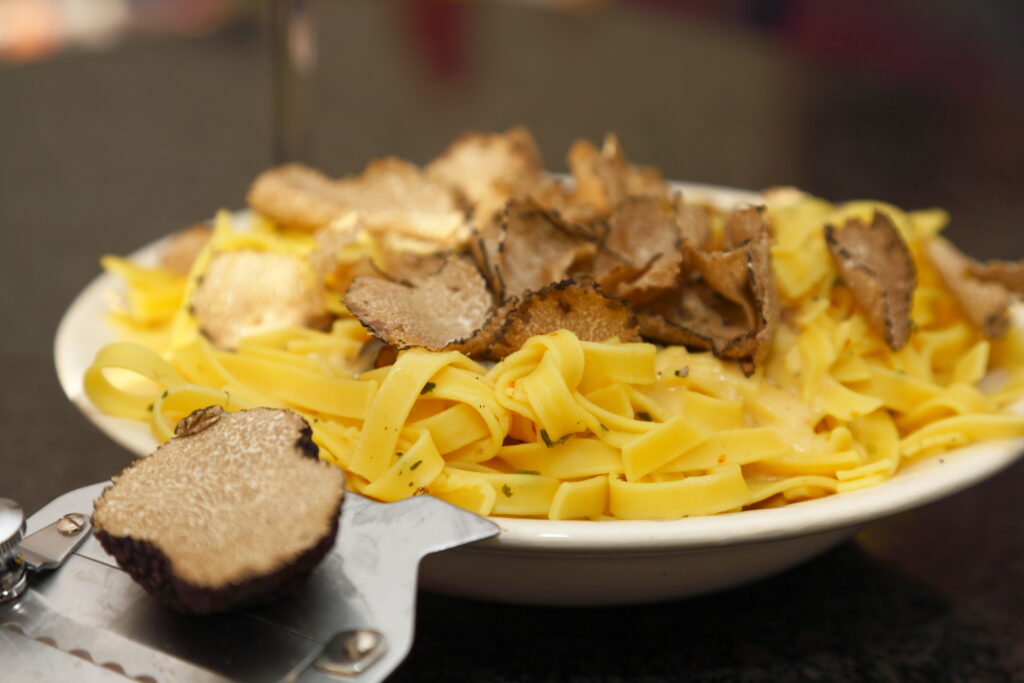
The annual appointment with the Alba Truffle Fair, which takes place in the charming historic center of the city from October 1st to December, is a very important event for Italian gastronomy.
Since 1929, this event has celebrated the cultural roots and traditions linked to truffles, accompanied by medieval games and shows with themed costumes. The event attracts tourists from every corner of Italy and beyond, eager to immerse themselves in a particular culinary experience and atmosphere.
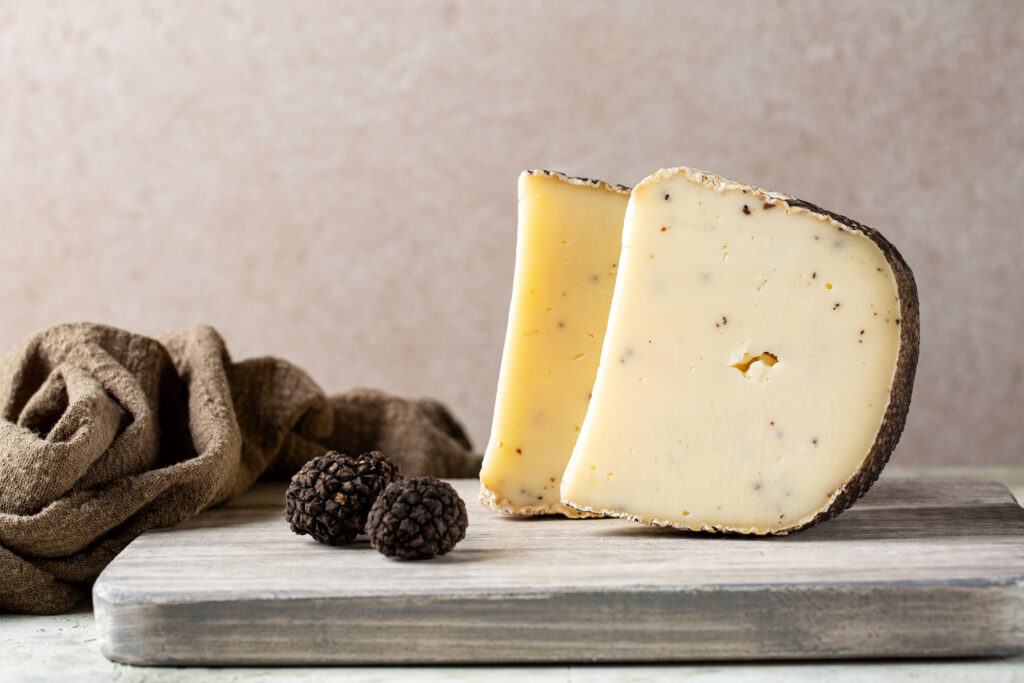
The Acqualagna truffle
Continuing our journey across the country, we reach a place known as the world truffle capital: Acqualagna.
This small town, with just over 4000 inhabitants, is located among the rocky slopes of the Gola del Furlo nature reserve, in the provinces of Urbino and Pesaro, in the Marche region. In its surrounding woods various species of truffles grow all year round, contributing significantly to national production; it is estimated that around two thirds of Italian truffles come from this area.
Acqualagna is not only renowned for the white truffle, second only to that of Alba, but also for other highly prized varieties such as the black “marzuolo” truffle and the black summer truffle.
Its importance is such that it merits three dedicated fairs during the year, scheduled for the beginning of November, the beginning of February and the end of July, to celebrate and enhance this excellent product. To better understand the economic and cultural impact of the truffle on this region, just consider the presence of the Acqualagna Truffle Museum
This institute offers insights into the biology, history, myths and sensory analyzes linked to this precious product. The truffle also plays a leading role in local cuisine, where dishes such as strozzapreti and tagliatelle are designed to enhance its flavour.
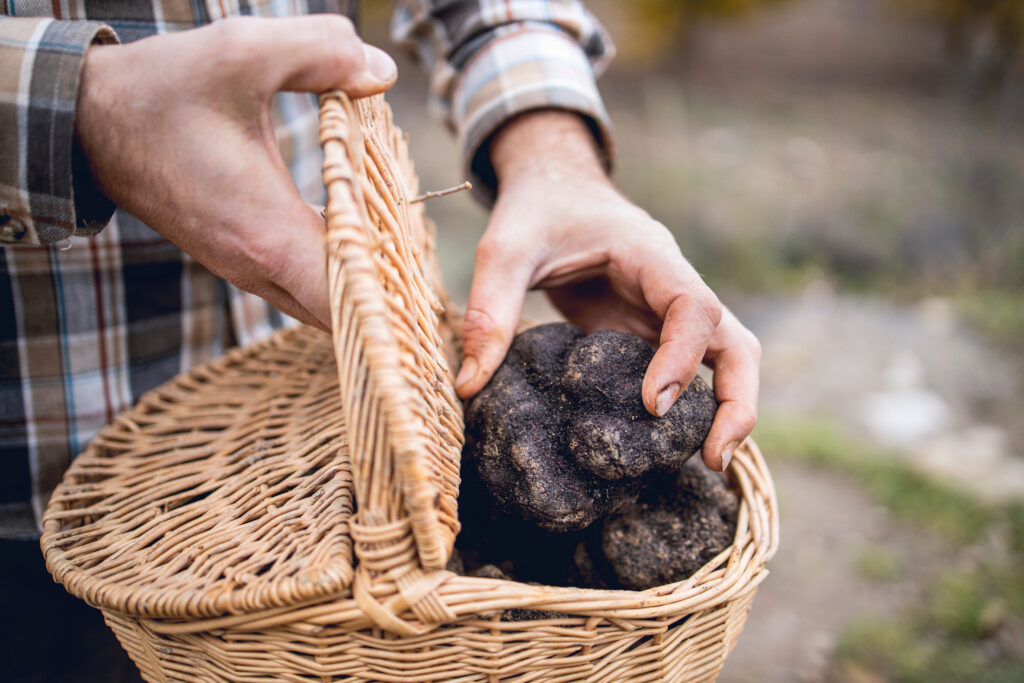
Norcia, truffles and good food
Moving about 150 kilometres, in Umbria, we come across another gastronomic oasis: Norcia, famous for its prized black truffle.
This picturesque village, nestled in the Umbrian mountains, at the gates of the Sibillini Mountains National Park, is renowned for its culinary culture rooted in the territory, which boasts an extraordinary variety of artisanal cured meats and cheeses. The Norcia truffle is considered among the most prized, characterized by a unique taste that tends towards sweetness with a light fruity aftertaste.
During cooking, as happens with every quality black truffle, its aroma amplifies and its flavor intensity is further enhanced, unlike white truffles which must never reach high temperatures. In this area, truffles are often served on simple croutons, combined with fresh pasta dishes such as spaghetti or anchovies with butter, risottos prepared with vegetable broth or in the famous “pasta alla norcina”.
The prized black truffle of Bagnoli
Going south, precisely in Campania, in the province of Avellino, we find another exceptional truffle: the prized black truffle of Bagnoli. It is located in the heart of the Picentini Mountains National Park, at an altitude that varies between 800 and 1500 meters aboe sea level.
This protected area, rich in biodiversity, offers a panoramic view and a series of trekking routes that allow you to explore the natural beauty of the surrounding mountains. The gastronomy of Campania completes the experience offered by the discovery of this truffle: from fresh cheeses coming from local pastures to selected meats, from the delicious DOP and IGP to seasonal fruit and vegetables. These extraordinary places, united by the presence of truffles, are characterized by rural spaces and extraordinary natural landscapes.
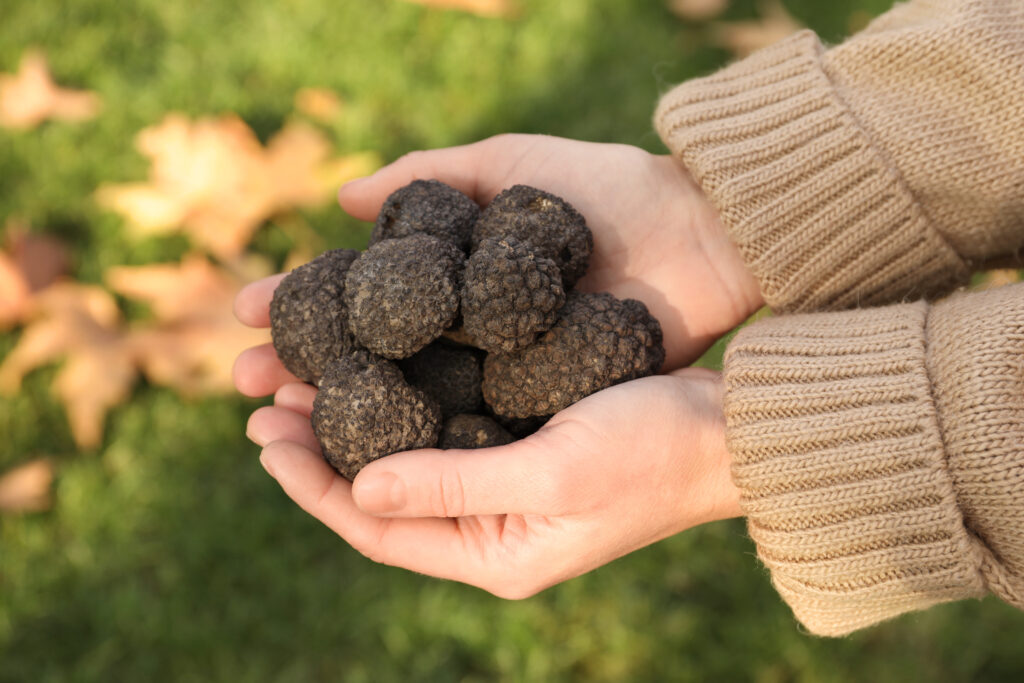
The importance of products such as truffles allows us to culturally enhance and, above all, discover these territories, through gastronomy made of local products. Therefore it’s essential to protect and preserve them, since they represent a true cultural heritage of our country.

